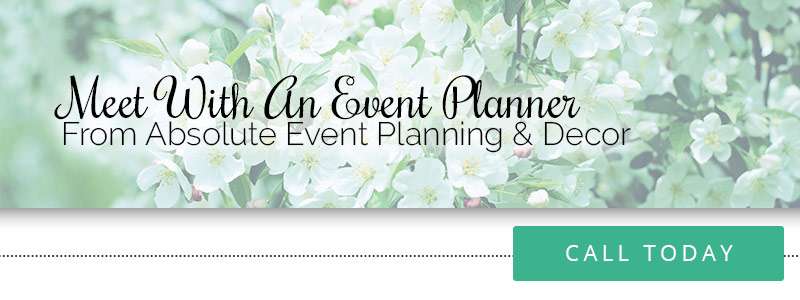Common Flowers For an Indian Wedding

When you go to traditional or western world weddings, you will more than likely see a variety of beautiful flowers. From the bride’s bouquet to table centerpieces, flowers are graciously incorporated into wedding ceremonies and receptions. But what about Indian weddings? Like most societies in the western world, east Indian weddings use flowers to flourish symbolism and creativity amidst marriage ceremonies. Generally, Indian weddings offer beautiful botanical presentations, selecting certain blossom types and colors to represent spirituality and advance divinity endowments on the union.
The importance of Indian wedding flowers
Flowers have a very special place in Indian weddings. Not only do flowers enhance the overall Indian wedding decor, but they are also believed to be a precursor of good fortune and luck. This is often why florals are often incorporated into the bride and groom’s wedding attire. Many grooms will have flowers tucked into a pocket on their suit or clothing, while brides often wear strands of vibrant flowers in their hair. In most cases, similar to western world weddings, the bridesmaids will have small bouquets or baskets of flowers, too.
With the importance that flowers hold in Indian weddings, it can often be difficult to choose which ones to use during a ceremony. To help, we are going to take a look at some of the most commonly used flowers for an Indian wedding that are used at ceremonies across the nation.
Marigolds
Marigolds are some of the most commonly used flowers for traditional Indian weddings. These cheery flowers are believed to radiate positive energy, and their bright and vibrant colors certainly make a case. Both orange and yellow marigolds are the most used flowers in Indian weddings from the ancient times. In addition, Vishnu and his better half, Goddess Lakshmi — otherwise known as the perfect couple — are venerated with marigolds. An aesthetic must at Indian weddings, strands of marigold is often placed at the entrance of a wedding venue as well as in the mandap. Many incorporate marigold flowers because their bright colors are believed to represent the sun.
Jasmine
While marigolds coincide signification, jasmine is a near second when it comes to prevalence. Known for its sweet, subtle, and fresh fragrance, these flowers are generally used as Indian wedding decor, however, many brides wear jasmine flowers in their hair. These small flowers are a sign of good fortune and they are considered to bring good luck, too. The flower’s white color is believed to represent purity, style, and virtue. Additionally, these flowers represent an arousing quality and proximity between the couple.
Roses
Another flower that can be commonly spotted at Indian weddings is a rose. All kinds of colors can be incorporated into the venue, ceremony, and celebration. Pink roses are believed to denote happiness, red roses symbolize love, and white roses represent purity. Traditionally, red rose petals are showered on the newlyweds during and after the ceremony. Oftentimes, roses are combined with marigolds and jasmine flowers for a beautiful display. Many wedding planners like roses due to their sweet fragrance that lasts longer than most other flowers. It’s hard to image an Indian wedding without the beauty and fragrance of roses!
Orchids
Once thought of as exotic and foreign, orchids are flowers that are gradually gaining significance in Indian wedding ceremonies. These rare flowers bloom in a variety of bright and vibrant colors. Many use orchids as table arrangements, as they are great for creating stunning contrast. These flowers signify beauty, wisdom, and strength and they convey a sense of deep love and unending support between the bride and the groom.
Lilies
Another flower that is starting to be used widely in Indian weddings nowadays is the lily. Coming in a variety of colors, including white, pink, red, orange, and yellow, lilies can quickly enhance wedding aesthetics. For many cultures, lilies carry a deep spiritual significance and represent love, satisfaction, and trustworthiness — the attributes of a marriage that are most important.
Carnations
Carnations are generally found in mixed bouquets along with other flowers, such as tulips and roses. These pastel colored flowers are durable and are very appealing. Many Indian weddings incorporate carnations, whether in the bride’s bouquet or in table centerpieces. Carnations come in multiple colors that are commonly used at Indian weddings: pink representing boldness, red symbolizing love, and white symbolizing talent. Pink roses are believed to denote happiness, red roses symbolize love, and white roses represent purity.
Flower selection is just a small part of the wedding planning process. Now that you know the most common types of flowers used in traditional Indian weddings, it will make choosing florals for your own wedding much easier!
Need Help With Indian Wedding Planning?
When you are planning an Indian wedding, there is a lot that has to be done. From booking the venue, finding vendors, picking flowers — the list goes on — wedding planning can quickly become overwhelming. However, when you work with Absolute Event Planning and Decor, you can ensure that your Indian wedding will go just the way you want. Our extensive wedding planning services go above and beyond to ensure your big day is a success.

Our team of wedding coordinators understand the detail and organization that goes into planning Indian weddings, from the symbols and traditions involved in the celebrations and food. If you have been in search of an Indian wedding planner or decorator for your traditional Indian wedding, contact the team at Absolute Event Planning and Decor!